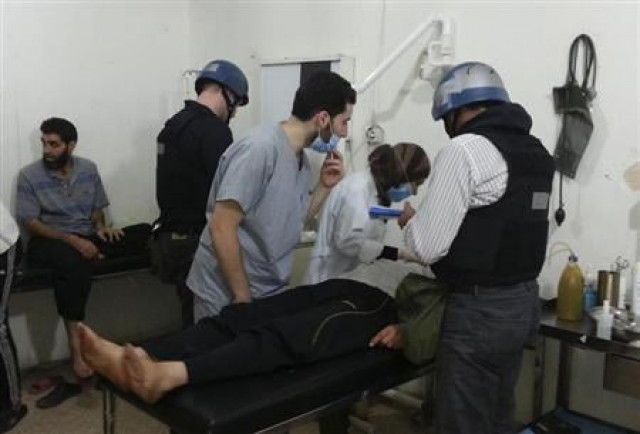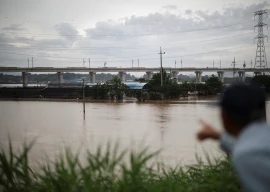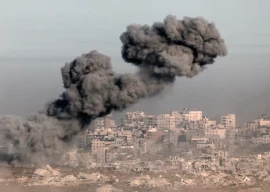
Rescuers and medics have said about 40 people were killed in an alleged April 7 attack on the then rebel-held town, which stirred international outrage and led to unprecedented Western air strikes on Syrian military installations.
After being denied access for a few weeks, a team of inspectors from the Organisation for the Prohibition of Chemical Weapons (OPCW) took more than 100 samples from some seven sites in Douma, on the northern outskirts of Damascus, several weeks later.
"The results show that no organophosphorous nerve agents or their degradation products were detected either in the environmental samples or in the plasma samples from the alleged casualties," the OPCW said in a long-awaited interim report late Friday.
Battered Syria rebels meet Russian brokers for talks on south
But it added the fact-finding mission did find "along with explosive residues, various chlorinated organic chemicals".
It is understood that could mean some samples contained potential markers of exposure to an active source of chlorine, not found naturally in the environment.
"Work by the team to establish the significance of these results is ongoing," the OPCW added.
Medics and rescuers say many of those killed died when a cylinder landed on the roof on a housing block.
That house as well as an apartment where another cylinder was found lying on a bed, and the hospital where patients were treated were among the sites visited by the inspectors. A total of 34 people were interviewed.
The fact-finding team was still working on the "provenance" of the cylinders which will require a "comprehensive analysis" by experts, the OPCW said.
The team's mission to Douma was launched following international outrage over images of adults and children appearing to be suffering from the effects of a poison gas attack.
There had been claims that residents were victims of exposure to sarin gas -- but that has been ruled out by Friday's interim report.
The Douma incident has deeply divided international opinion.
Russia has stuck by its ally Syria and angrily insisted the attack was staged by the White Helmets volunteer rescue service.
Air strikes resume in southwest Syria after talks fail
Western powers, however, blamed the regime of Syrian President Bashar al-Assad. In response, the United States, France and Britain joined forces to unleash air strikes on Syrian military installations for the first time in the seven-year civil war.
However, visits by the OPCW inspectors to a warehouse and another location in Douma suspected of toxic arms manufacture showed "no indication of either facility being involved in the production of chemical warfare agents," the body concluded.
Meanwhile, in a separate report the fact-finding team said it "cannot confidently determine whether or not a specific chemical was used as a weapon" in two earlier alleged incidents in 2016.
It said the two incidents had happened in neighbourhood of Al-Hamadaniyah, on October 30, 2016 and in the area of Karm al-Tarrab, a few weeks later on November 13, 2016.
Friday's report came a week after the OPCW's top policy-making body agreed that the organisation should have new powers to say who was responsible for any toxic arms attacks in Syria.
Late last year, Russia wielded its veto power at the UN Security Council to effectively kill off a joint UN-OPCW panel aimed at identifying those behind suspected chemical attacks in the war-torn country.


















COMMENTS
Comments are moderated and generally will be posted if they are on-topic and not abusive.
For more information, please see our Comments FAQ